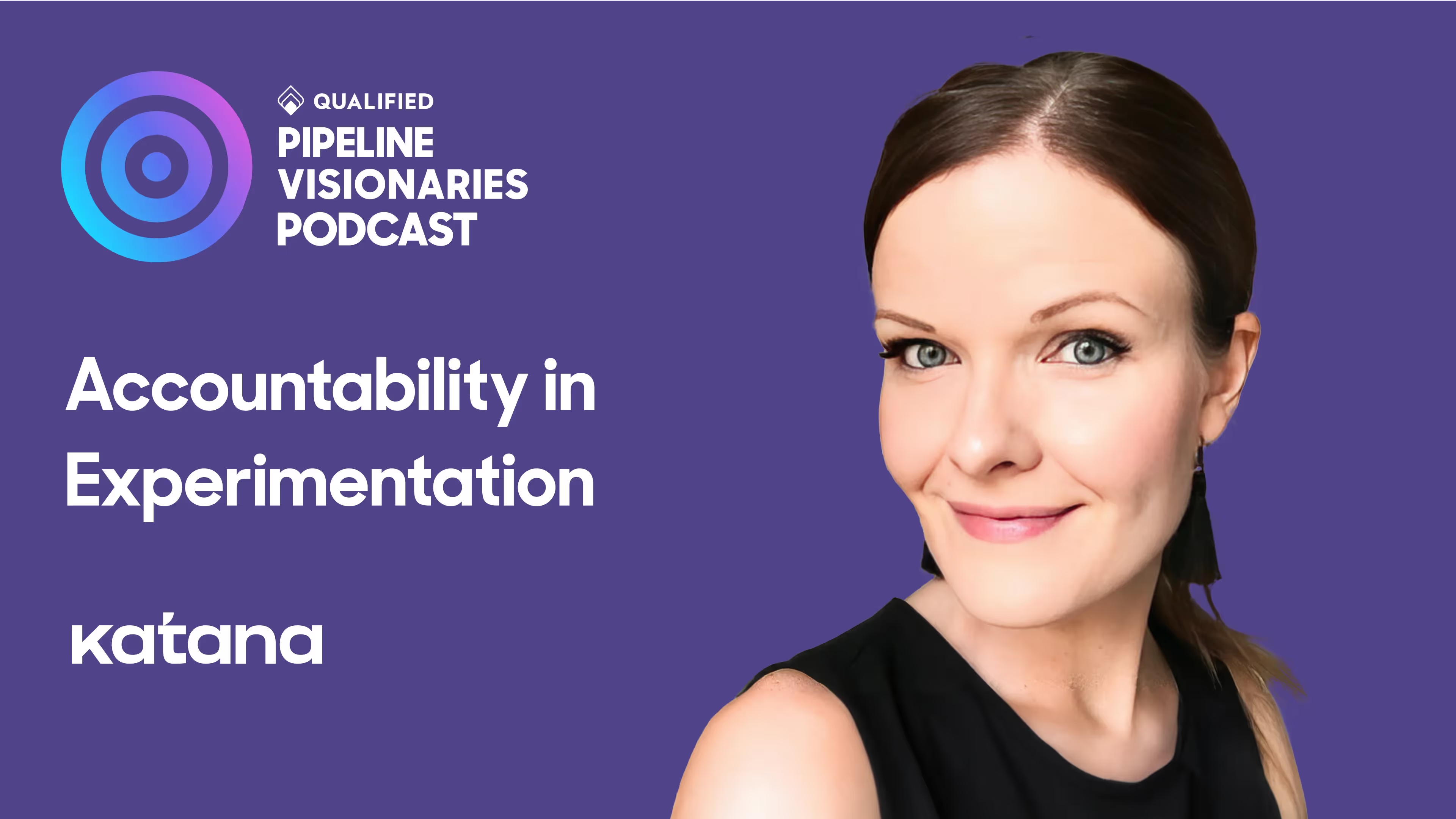Accountability in Experimentation
Riika Söderlund discusses staying accountable for intentional experimentation, how she invests in talent and why she dislikes the term “marketing strategy”.




Riika Söderlund discusses staying accountable for intentional experimentation, how she invests in talent and why she dislikes the term “marketing strategy”.

This episode features an interview with Riikka Söderlund, CMO at Katana Cloud Inventory, a company that provides SMBs with easy-to-use inventory management software, to get them the real-time data that they need.
In this episode, Riika Söderlund discusses staying accountable for intentional experimentation, how she invests in talent and why she dislikes the term “marketing strategy”.
Key Takeaways:
Stay up to date with weekly drops of fresh B2B marketing and sales content.
Riika Söderlund discusses staying accountable for intentional experimentation, how she invests in talent and why she dislikes the term “marketing strategy”.


This episode features an interview with Riikka Söderlund, CMO at Katana Cloud Inventory, a company that provides SMBs with easy-to-use inventory management software, to get them the real-time data that they need.
In this episode, Riika Söderlund discusses staying accountable for intentional experimentation, how she invests in talent and why she dislikes the term “marketing strategy”.
Key Takeaways:
Stay up to date with weekly drops of fresh B2B marketing and sales content.
Riika Söderlund discusses staying accountable for intentional experimentation, how she invests in talent and why she dislikes the term “marketing strategy”.


This episode features an interview with Riikka Söderlund, CMO at Katana Cloud Inventory, a company that provides SMBs with easy-to-use inventory management software, to get them the real-time data that they need.
In this episode, Riika Söderlund discusses staying accountable for intentional experimentation, how she invests in talent and why she dislikes the term “marketing strategy”.
Key Takeaways:
Stay up to date with weekly drops of fresh B2B marketing and sales content.
Riika Söderlund discusses staying accountable for intentional experimentation, how she invests in talent and why she dislikes the term “marketing strategy”.



This episode features an interview with Riikka Söderlund, CMO at Katana Cloud Inventory, a company that provides SMBs with easy-to-use inventory management software, to get them the real-time data that they need.
In this episode, Riika Söderlund discusses staying accountable for intentional experimentation, how she invests in talent and why she dislikes the term “marketing strategy”.
Key Takeaways:
Discover how we can help you convert more prospects into pipeline–right from your website.